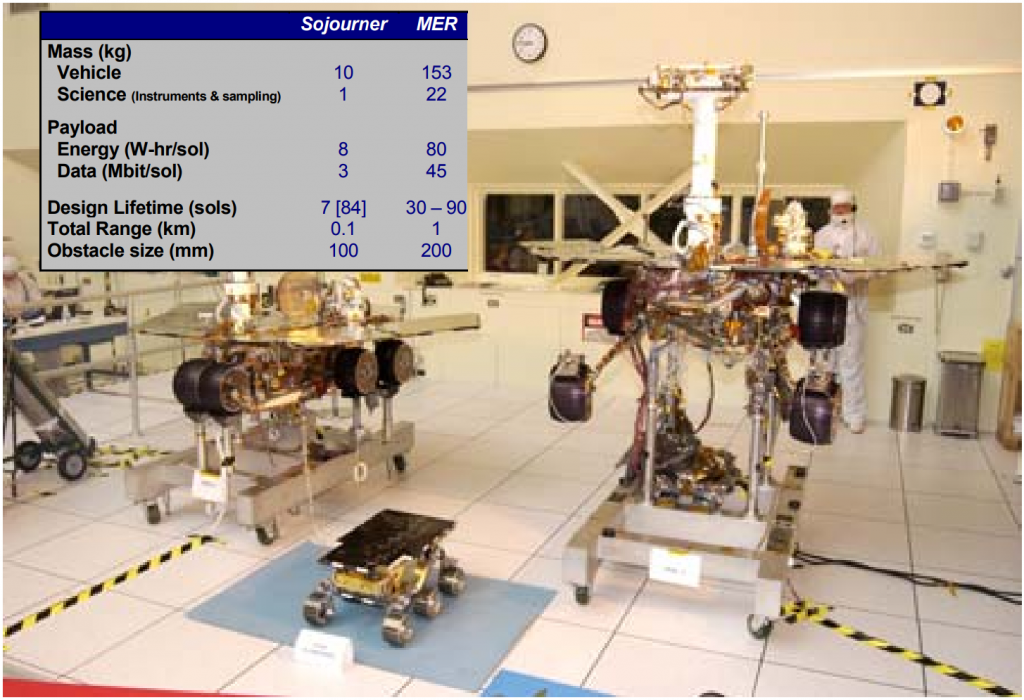What we can learn from NASA's opportunity Mars rover

"My battery is getting low and its getting dark"
These were the rendition of Opportunity's last words, the NASA rover that was decommissioned in June of 2018. With it's mission planned for 90 Earth days, it lasted for 15 Earth years largely due to the success of the Battery Technology on-board.
Before the Mars Exploration Rovers (MER) Spirit and Opportunity in 2003, the Sojourner rover on the Pathfinder mission in '97 was also a success. The size of the Rovers is quite different and can be seen in the picture below.

The Sojourner rover carried a 40Ah lithium battery on-board, while the MERs carries two 8Ah lithium batteries. The first thing that comes to mind is - why do the bigger rovers have a smaller battery?
This is due to two main things, the improvement in battery technology, as well as the larger surface area available for solar arrays to be able to generate more energy.
Energy Input
The solar arrays on the MERs didn't just have a larger surface area, they were also triple-junction GaInP/GaAs/Ge cells. At the beginning, these solar arrays were able to generate 1000Wh per sol. A sol is the term for a day of Mars, which is 24 hours 39 minutes 35.24 seconds.
Let's do a quick calculation to understand what this means.
The MERs were made identical, and their battery unit is shown below. It consisted of 2 parallel battery units, each hosting 8 cells. So fully charged voltage of one battery was 32.8 V, which brings full charge voltage of each cell at 4.1 V.

Image courtesy of NASA
If the energy input of the solar arrays was at 1000Wh per sol, this translates to 30.49Ah per sol. Two parallel batteries of 8Ah, each need 16Ah for full charge, which means an excess production of 14.49Ah. This was utilised in running the Rover's daily operations as well as the battery heaters.
The energy produced from the solar arrays slowly declined over the years due to dust accumulation on the panels as well deterioration. The picture below shows Opportunity's solar arrays covered by dust during a storm on the left and then slowly the dust accumulation flying away with wind on the right. After two years of operation, it was found that the energy production dropped to around 500Wh per sol, which translates to 15.24Ah of charge for a 32.8V system (It is to be noted that 32.8V was the full charge voltage and not the nominal voltage of the cell, so there is a some inaccuracy in the Ah calculation here, but okay for our purpose of understanding).

Power vs Energy Requirements
The MERs needed about 100W of power to operate, in comparison the Sojourner needed only about 16W.
The Energy requirements for the MER were 80Wh per sol, compared to Sojourner which needed only about 8Wh per sol.
The batteries on the MERs came with their own heated box to overcome the extreme temperatures of space. During the day while the solar arrays power the rover, they also charge the batteries and keep them warm.
Get started with our free 10 day course on batteries delivered straight to your email inbox!

